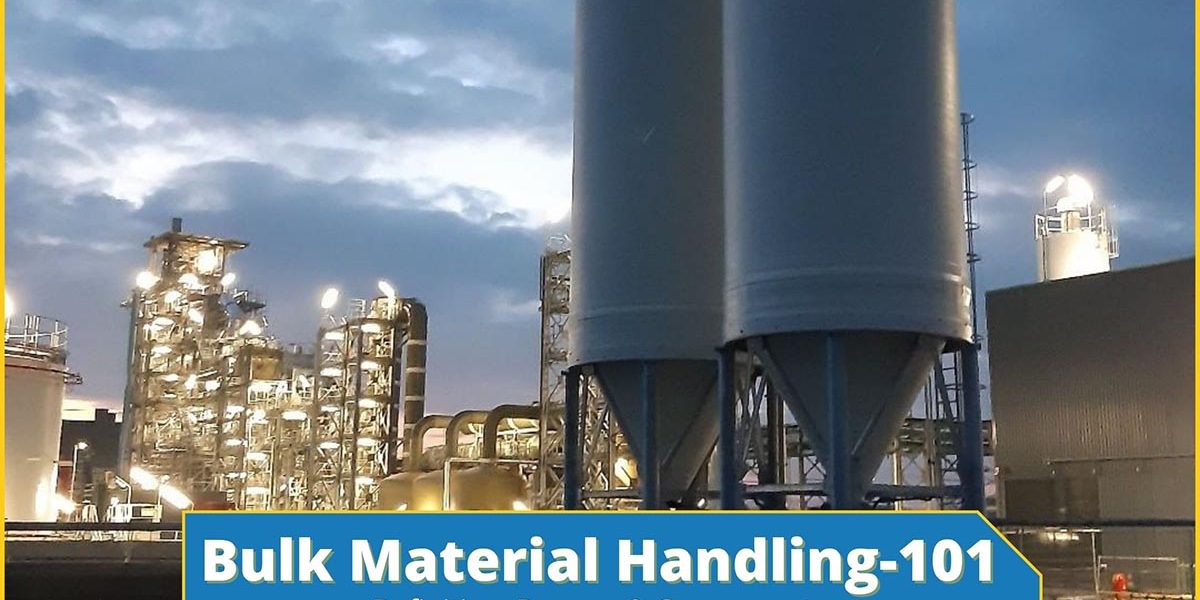Bulk material handling is the engineering that surrounds the design of systems and equipment used to handle bulk materials which are often stored in heaps and may be granular, powdery, or lumpy. A few examples of these materials are woodchips, ores, gravel, chemicals, sand, minerals, sugar, and salt in loose and bulk form. A good bulk material handling system will be able to provide you with a solution for your industry, no matter how complex your needs. Read on to see exactly what bulk material handling is and how it works.
What is Bulk Material Handling?
Bulk material handling deals with everything surrounding the equipment and processes involved in industries that handle large amounts of loose material. It is the whole process of designing, and manufacturing the equipment used to handle and process bulk materials. These materials include granules, powders, flakes, and pellets transported and packed in different containers. Therefore, various industries can make use of bulk material handling systems, from agriculture, food, and beverage to mining, asphalt, paint, and even metal industries. Bulk handling systems work with other industrial equipment to make the job of packing and storing large volumes of materials both faster and cost-effective.
What is the Process of Bulk Material Handling?
The process of bulk material handling starts at one point where the bulk material is in loose, unpacked form. The material is loaded into the machine either manually or semi-automatically by using other equipment like a forklift, or by an extension of the bulk handling system if it’s an advanced one.
The material is then moved from this point to the final destination, most often by a screw conveyor, if the material is in powder form. Depending on the characteristics of the bulk material and the distance between the two points, special fittings may be put in place to make the process safer and more efficient.
The final stage of this process is the offloading of the bulk material. It may be in bulk packaging bags, a storage unit like a silo, stockyard, or even a stockpile in another location.
The bulk material handling process is often dictated by the type of material being handled and its nature. It’s because different characteristics of material lead to different processes being more efficient than others. With the right setup, efficient transfer and packaging of material are carried out. The factors affecting bulk handling include:
• Particle size in mesh or microns
• The temperature of the material
• The form of the material, whether flake, powder, granular, chip, pellet, stringy, irregular, or any other
• The bulk density, which is measured in pounds per cubic feet
• The characteristics of the material, whether it compacts, aerates, fluidizes, is fragile, heat sensitive, explosive, hygroscopic, flammable, and more
• The angle of repose, which is the steepest angle of descent relative to the horizontal plane to which the material can be piled without slumping
• The flow characteristics of the material in the feeder, hopper, or silo discharge.
The Components of Bulk Material Handling
As is the case with other industrial equipment, bulk handling systems have many components. These are outlined below:
• Conveyor belts, screw conveyors, or tubular drag conveyors
• Moving floors
• Toploaders
• Stackers
• Reclaimers
• Bucket elevators
• Truck dumpers, wagon tipplers or railcar dumpers
• Hoppers and diverters
• Loaders and unloaders, which are mobile in nature and move the material to and fro
• Storage facilities, including silos.
Advanced systems have integrated storage silos, conveying setup, and discharge capabilities. This makes it easier to get a job done without having to get a lot of different equipment.
How to Choose the Right Bulk Material Handling System
When settling on the bulk material handling system, there are several considerations that you need to make in order to have the most efficient system.
The first thing that will influence your decision is the nature of the bulk material you are handling. Is it in large particles or small ones? Is it heat sensitive, flammable, or even explosive? Does it compact easily? Is it very dense or not dense at all? Answering these questions will help you know the type of setup that will be the most effective for your use.
Another factor to consider is whether you need your final product to be packaged in bulk. If this is the case, it will be much more efficient to get a system that has automated bulk filling equipment integrated. It will improve dust containment and safety.
Finally, you should consider the specifications, programs available, and service needs, as well as spare parts available for the bulk handling system you want to get. It will ensure that the system is in line with your specific needs and that in case of breakdowns and such, you can easily have the issue fixed. Any time the equipment spends undergoing service and repairs, and it could have been working, so this should be minimal.
It is easy to get bulk handling systems from many places, but it’s necessary to get them from professionals with years of experience in the bulk handling industry like Sodimate. This way, you will not just get the machinery you need, but you will also get guidance on how to set it up and advice on how to do so as well. The extra steps that the qualified staff offer, make Sodimate the best option for all your industry’s needs.












